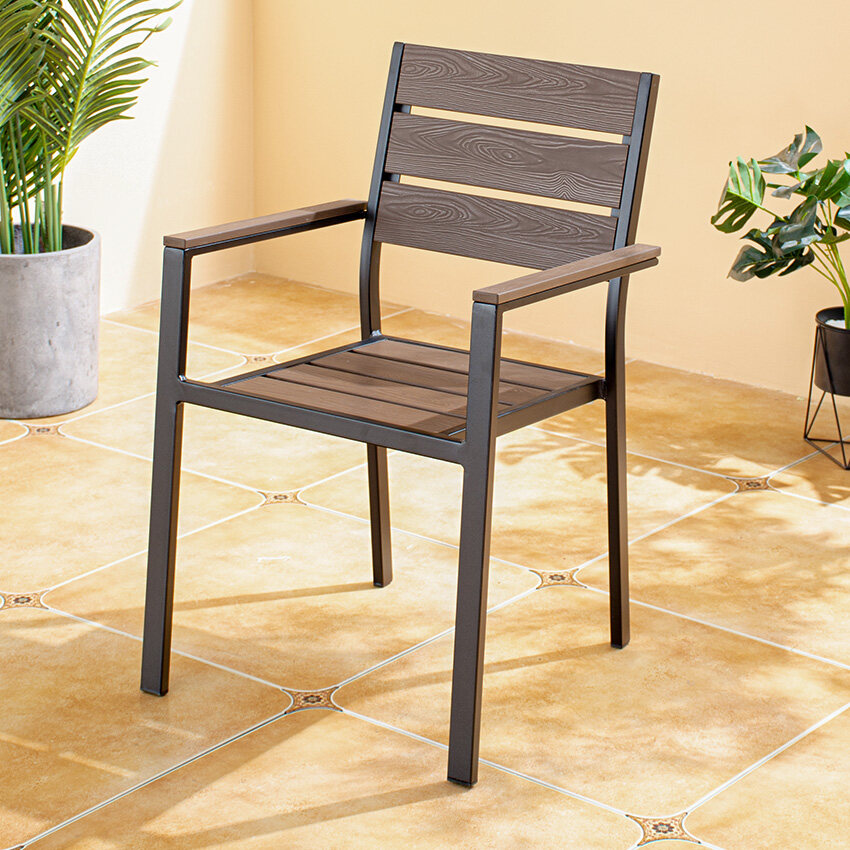Email format error
Email cannot be empty
Email already exists
6-20 characters(letters plus numbers only)
The password is inconsistent
Email format error
Email cannot be empty
Email does not exist
6-20 characters(letters plus numbers only)
The password is inconsistent


Wood-plastic composite (WPC) chairs are a modern solution that combines the natural look and feel of wood with the durability and versatility of plastic. In this article, we will explore the definition of WPC materials, their advantages in chair manufacturing, the manufacturing processes involved, and a comparative analysis with traditional chair materials.
Wood plastic composite (WPC) is a composite material made from wood fibers or flour and thermoplastics, such as polyethylene, polypropylene, or polyvinyl chloride (PVC). These materials are mixed together to form a durable, weather-resistant, and environmentally friendly alternative to traditional wood or plastic materials.
Durability: WPC chairs are highly durable and resistant to rot, decay, and insect damage, making them suitable for both indoor and outdoor use.
Low Maintenance: Unlike traditional wooden chairs, WPC chairs require minimal maintenance, as they do not need to be stained, painted, or sealed regularly.
Versatility: WPC materials can be molded into various shapes and sizes, allowing for the creation of custom designs and ergonomic features.
Environmentally Friendly: WPC materials are often made from recycled wood fibers and plastic, reducing the demand for virgin materials and minimizing waste.
WPC chairs are typically manufactured using two main processes: extrusion molding and injection molding.
1. Extrusion Molding: In this process, a mixture of wood fibers, flour, and thermoplastic resins is fed into an extruder, where it is heated and mixed to form a homogeneous melt. The molten mixture is then forced through a die to create the desired shape of the chair components. The extruded parts are cooled and cut to size before assembly.
2. Injection Molding: Injection molding involves melting the WPC material in a heated barrel and injecting it into a mold cavity under high pressure. Once the material cools and solidifies, the mold opens, and the finished chair component is ejected. Injection molding allows for faster production speeds and more intricate designs compared to extrusion molding.
When comparing WPC chairs with traditional wooden, metal, or plastic chairs, several factors should be considered:
Cost: While the initial cost of WPC chairs may be higher than some traditional materials, their long-term durability and low maintenance requirements can result in cost savings over time.
Durability: WPC chairs are highly resistant to moisture, rot, and insect damage, making them a durable option for both indoor and outdoor use.
Environmental Impact: WPC materials are often made from recycled wood fibers and plastic, making them a more sustainable choice compared to virgin materials.
Aesthetics: WPC chairs offer the natural look and feel of wood with the added benefits of plastic, allowing for a wide range of colors, textures, and finishes to suit any design aesthetic.
In conclusion, wood plastic composite (WPC) chairs offer a sustainable, durable, and versatile alternative to traditional chair materials. By understanding the manufacturing processes involved and conducting a comparative analysis with traditional materials, consumers can make informed decisions when choosing the right chairs for their needs.